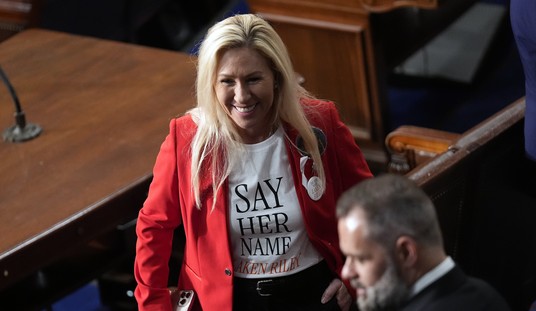You would think the Democrats would be on cloud nine.
Donald Trump’s favorability ratings are as low as anyone can remember their being for a sitting president. The Republicans failed to repeal and replace Obamacare. They are stumbling on tax reform. They won the special elections to replace Trump’s cabinet selections. But the margin of victory in these “safe” seats was small enough to be scary. According to the Cook Political Report, if Democrats turnout in the same numbers they did in the special elections, they will pick up 80 House seats in next year’s elections.
So, is the Democratic Party breaking out the champagne? Are the party faithful celebrating and gloating over their rosy prospects for the future? Far from it. In the first six months of this year, Democrats have raised half the money Republicans have raised and they even trail in small-dollar giving.
The split among Democrats in California has become so bitter that it made the front page of Thursday’s New York Times. The problems are not confined to the west coast. The split is evident in New York state and in other deep blue places. “California is a Warning for the National Party,” the newspaper’s headline blared.
So, what are Democrats fighting about? Issues. Issues? Yes, issues. For the first time in a long, long time, Democrats are having to confront in a serious way what they really stand for. If that surprises you, it’s probably because you haven’t been paying close attention.
Other than Obamacare, Democrats haven’t really had a new idea or a bold idea or anything you might even call an idea at all for … how long? … I would say at least 40 years.
Forty years ago, Jimmy Carter was president and the one lasting thing he did was preside over the deregulation of our major regulatory agencies. That, of course, was a Republican idea. But party didn’t matter. For the last 40 years, the policy agenda has been the Republican agenda: deregulation, privatization, entitlement reform, the flat tax, school vouchers, private social security accounts, free markets, free trade, etc. No matter which party was in power, that was what we implemented or what we argued about – both here and all over the western world.
Recommended
Through it all, the identity of the Democratic Party tended to be one of nebulous opposition. If you were to the left of whatever the Republicans were doing – whether a little bit to the left or way over on the far left, the Democrats were the party for you. For the most part, Democrats didn’t bother to offer much more definition than that of who they were and what they thought.
Until there was Trump. Even though the concept of a left-right continuum can be a bit misleading, bear with the metaphor for a moment. Trump was definitely to the left of Hillary Clinton on foreign trade and international military engagement. On immigration, he was more aligned with the position of organized labor, while she was more aligned with big business and the editorial page of the Wall Street Journal. Forgetting for the moment the disastrous Republican attempts at health reform, Trump’s rhetoric on the issue was definitely to the left of Hillary on that as well. (He wanted to insure everybody; she was going to leave 30 million uninsured.)
Although Trump’s appointees are busily overturning Obama’s labor regulations, it would not surprise me if polls reveal that Trump is viewed as more pro-union than Hillary. During the campaign, Trump said he wanted a tax cut for the middle class, not for the rich. That’s easy to dismiss as campaign rhetoric. But now in office, he is entertaining the idea of a tax increase on the rich!
An editorial in the Wall Street Journal by Frank Buckley contains a fascinating graphic. It shows that 73% of the electorate is left-of-center on economic issues, but 52% is socially conservative. Although most of us don’t think of Trump as a social conservative, he won overwhelmingly among this group. The left is so in-your-face on these issues, a Republican doesn’t really have to say much of anything to get the social conservative vote.
But Trump also got a fair proportion of those who were liberal on economic issues. These are votes that Ted Cruz never would have received.
These developments have been devastating to the Democratic Party. They have left the party divided, dispirited and angry.
Why anger, you might ask? Frustrated. Disappointed. Disgusted. Embarrassed. Turned off. Those emotions could be readily understood. But what is producing so much anger among Democrats and among the liberal media?
I suspect it’s because Trump appears so simple and mercurial about it. His political positions seem to emerge off-the-cuff, by twitter or impromptu press conference or whim. Like the little girl who declared the emperor had no clothes, he appears to be discombobulating the body politic without any evidence of scheming or careful calculation.
Then there is identity politics – which is what the Democrats have been all about for the past several decades. While Democrats were appealing to blacks as blacks, Hispanics as Hispanics, women as women, gays as gay, etc., Donald Trump was the first Republican in modern times to interject identity politics into a national election. It was the oldest form of identity politics in the history of elections – all over the world. It’s called nationalism.
“Make America great again,” resonated. Just as “make Japan great again” would resonate in Japan or “make Argentina great again” would resonate in Argentina. Outside of the Middle East (where religious rivalry dominates), nationalism is the strongest political force in the world today.
Nationalism trumps ethnic identity, racial identity and sexual identity. That’s why Trump did better among blacks and Hispanics than Romney did. It’s why he got more votes from white women than Hillary did.
It’s why the Democrats are in trouble going forward, despite the continuing missteps by Republicans in the White House and on Capitol Hill.

























Join the conversation as a VIP Member